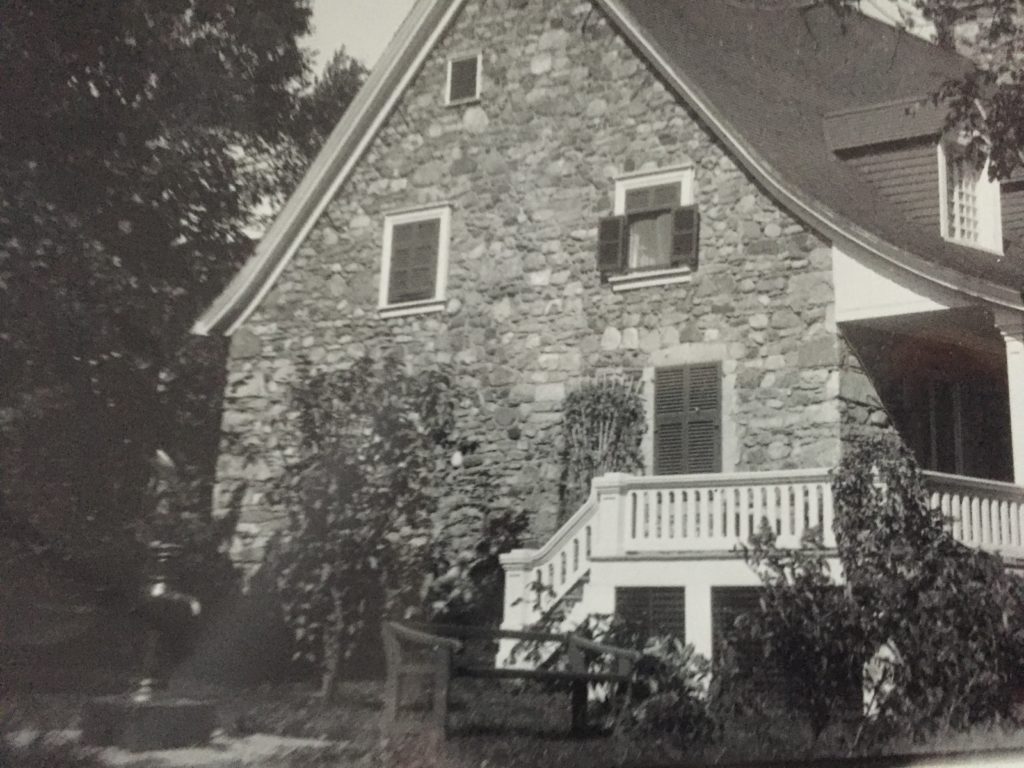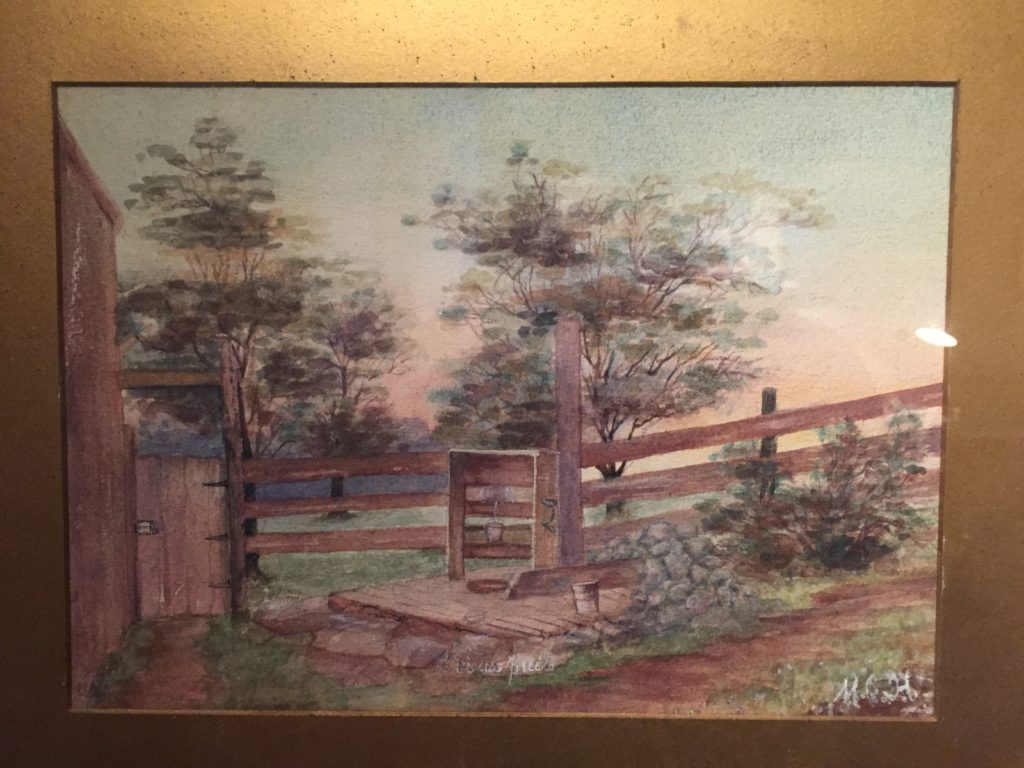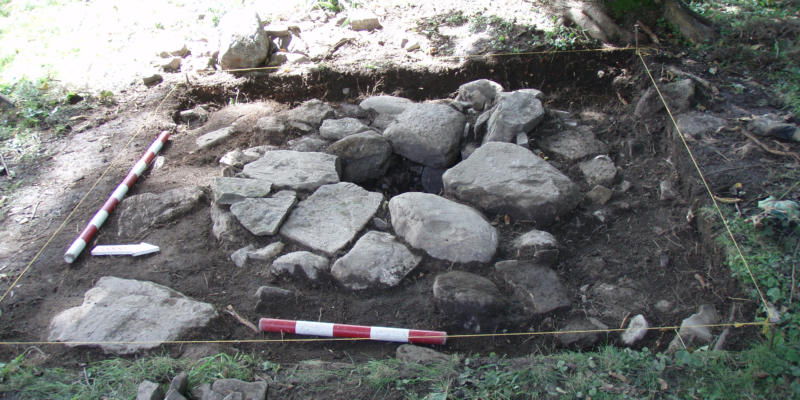Written by Delia Oltean –
To walk on the grounds of the Hurtubise House is to walk on years of history and on a land that has seen many generations pass. It is not surprising, given the age of the Hurtubise House, to learn that underneath a few layers of soil are found artifacts or fragments of objects forgotten and buried over time. Already, it is possible to notice some stones emerging from the lawn while walking near the carriage house. Let’s look at the meaning of these stones that can easily be missed…

It is necessary to go back to 1839 when the Hurtubise family’s land ownership changed radically. The land, since the acquisition of Louis Hurtubise in 1699, had never been divided and yet, the two brothers Antoine-Isaïe and Benjamin-Dominique decided to do otherwise by dividing the agricultural land in two.
On a plan by H. S. Sitwell, a prolific cartographer of the mid-nineteenth century, it is possible to see that to the southwest of the house there is a well (it is the one that can be seen by the stones today). It seems that it was condemned sometime later, and that the family replaced it with another one, very close to the house. “This second well had a cement cover and a wrought iron pump” (Stewart and Robichaud, 2001, p.57).

The history of the wells does not end there, however, as there are traces that suggest a third well: on the east side of the property there appears to have been a well surrounded by a board fence (Stewart and Robichaud, 2001, p.57). The second and third wells are no longer visible today and, despite some estimates from an archaeological excavation conducted in 2011, the exact location of these two other wells remains a mystery (Archéotec inc., 2012, p.73).

Sources:
- Steward, A. et Robichaud, L. (2001). Étude patrimoniale de la maison des Hurtubise. Institut d’histoire de l’Amérique française.
- Archéotec inc. (2012). Inventaire et supervision archéologiques. Ville de Montréal et ministère de la Culture, des Communications et de la Condition féminine.
